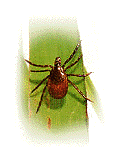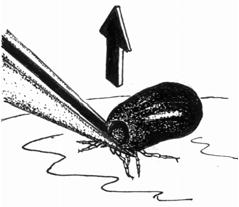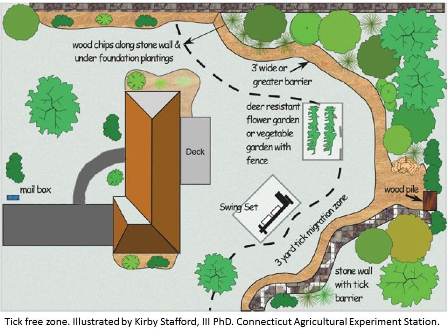Ticks

Tick Species
Many tick species can be found in Connecticut; the tick that transmits Lyme disease is called Ixodes scapularis, or deer tick. For detailed information concerning this and other tick species, please visit the Connecticut Agricultural Experiment Station or the University of Rhode Island's TickEncounter Resource Center.
Tick Removal
Quickly finding and removing ticks from the body is an important step in preventing infection with tick-borne diseases. Tweezers are the best method to remove ticks. Contrary to popular belief, smothering ticks with petroleum jelly is not effective. Never use a hot match, gasoline or any other chemical to remove a tick.
The best way to remove a tick:
- Grasp it close to the mouth parts near the skin surface.
- With gentle, steady pressure, pull the tick upward away from the skin until it releases.
Once the tick is removed, wash the area of the bite with an antiseptic or rubbing alcohol.

Symptoms of tick-borne diseases found in Connecticut may all include a fever and general muscle aches that can occurr within 35 days from the time of the bite.
If you get any symptoms of Lyme disease, or symptoms of other tick-borne diseases, contact your doctor right away.
Tick Management
The Connecticut Agricultural Experiment Station (CAES) is the Nation's first state agricultural experiment station and was founded in 1875 to promote agriculture using scientific investigation and experiment. Their motto is "Putting Science to Work for Society", and is as relevant today as it was at their founding. The CAES conducts research on arthropod pests of food crops, ornamental and fruit trees, shrubs, turf, forests, and pests of public health importance. They enjoy many key accomplishments that include:
-
Made the first isolations of Lyme disease agents from Connecticut wildlife. (1983)
-
Developed antibody tests for laboratory diagnosis of Lyme disease. (1984)
Dr. Kirby Stafford is a medical-veterinary entomologist whose research focuses on the ecology and control of the blacklegged tick. He joined the CAES in 1987. Dr. Stafford is currently Vice Director, Chief Entomologist and State Entomologist of the CAES. His publication, entitled Tick Management Handbook, is an integrated guide for homeowners, pest control operators, and public health officials for tick management and the prevention of tick-associated disease.

The handbook includes information on the following topics:
-
Ticks of the Northeastern United States
-
Tick-Associated Diseases
-
Personal Protection
-
Integrated Tick Management (including creating a Tick Free Zone)
-
Area-wide Chemical Control of Ticks
-
Biological Control of Ticks
The Tick Office has information concerning tick submission, identification and testing; tick submission form; tick testing summaries; guidelines for local health departments.
CAES Tick Office & Tick Testing
National Tickborne Diseases Provider Reference Manual

